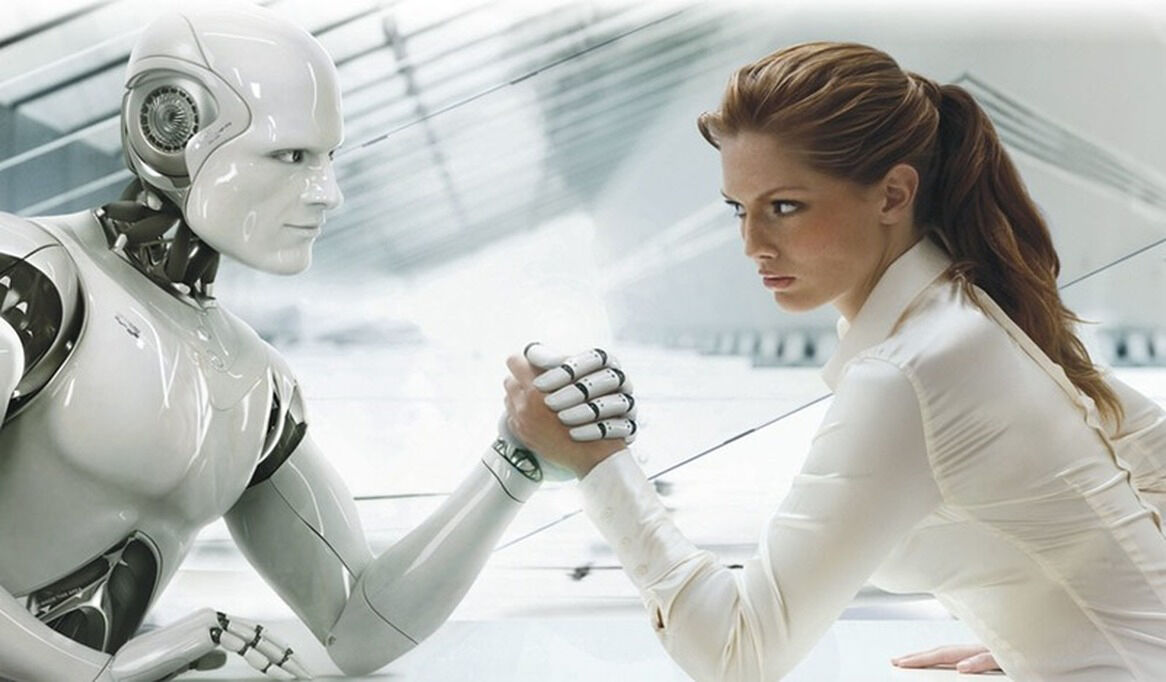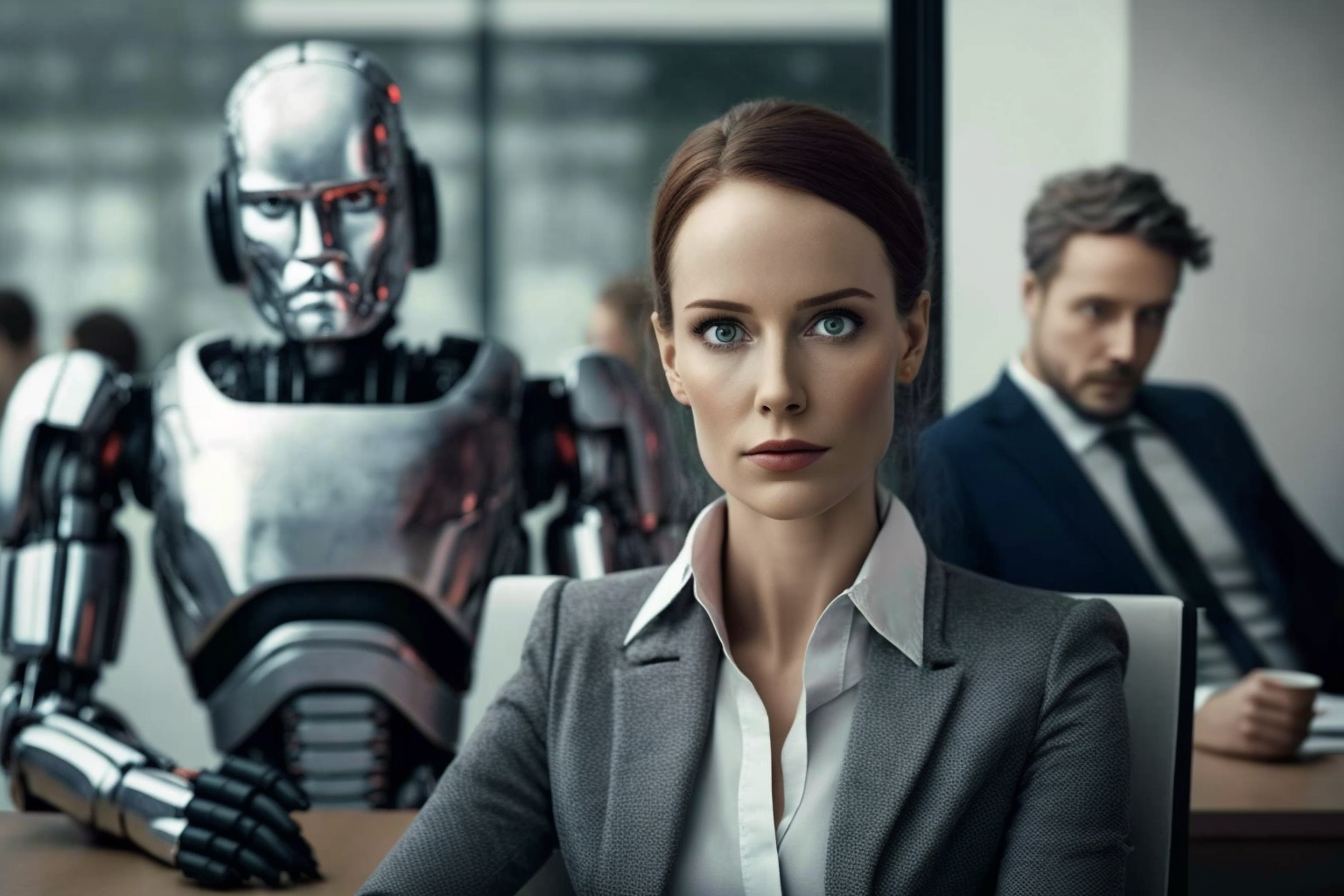The convergence of Artificial Intelligence (AI) and the Internet of Things (IoT) is shaping a new technological paradigm that is radically transforming the way we live, work and connect with the world. If you haven’t yet realized the scale of this revolution, get ready: we are facing a transformation that, if well-used, can boost businesses, improve quality of life and open doors to unimaginable innovations.
The meeting of two technological powers
Imagine a scenario where everyday objects – from home appliances to security systems and vehicles – are interconnected, constantly collecting and exchanging data. Now, add to this the power of Artificial Intelligence , which analyzes, interprets and makes decisions based on this data. The result is a synergy capable of optimizing processes, predicting behaviors and creating personalized experiences automatically.
The Internet of Things (IoT) connects devices and sensors to a global network, while AI brings the ability to process and transform this mass of information into valuable insights. This combination not only expands technological possibilities, but also redefines the concepts of efficiency and innovation. If you are still unsure about the potential of these technologies, pay attention: they are already, and will increasingly dictate the rules of the game in several sectors.
Defining the concepts: What is AI and IoT?
Artificial Intelligence (AI)
Artificial Intelligence is a branch of computer science that focuses on creating systems capable of performing tasks that previously required human intelligence. These tasks range from speech and image recognition to complex decision-making. In short, AI simulates human cognitive processes, learning from data and evolving over time. Whether in the form of machine learning algorithms or neural networks, AI is the tool that transforms raw data into intelligent solutions.
Internet of Things (IoT)
The Internet of Things is the interconnection of physical devices equipped with sensors, software, and other technologies that communicate with each other over the Internet. These devices can collect, send, and act on data, providing a level of automation and monitoring that was unthinkable just a few years ago. IoT is present in smart homes, connected cities, automated factories, and more.
By combining these two technologies, the possibilities expand exponentially: AI provides the intelligence to interpret the data collected by IoT devices, while IoT expands the reach and relevance of that data, creating an ecosystem where each element has a crucial role in building the digital future.
How AI Powers IoT: Synergy and Transformation
The combination of AI and IoT is not just a passing trend – it represents a structural transformation that impacts several sectors. Let’s explore how this synergy enhances operations and brings concrete benefits:
1. Intelligent automation and operational efficiency
Integrating AI into IoT devices enables the creation of autonomous systems that monitor and adjust processes in real time. In industrial settings, for example, sensors installed on machines continuously collect data. AI algorithms analyze this data and identify patterns that can predict failures or optimize production. The result? Greater operational efficiency and cost reduction, by minimizing unexpected downtime and optimizing resources.
2. Data-driven decision making
The ability to collect and analyze large volumes of data is one of the greatest advantages of IoT. When this information is processed by AI systems , it becomes possible to extract powerful insights for strategic decision-making. Whether in environmental monitoring, urban traffic management or consumer behavior analysis, the combination of AI and IoT enables faster and more accurate decisions, based on real data and not on assumptions.
3. Personalizing experiences
In the world of marketing and retail, the combination of AI and IoT creates opportunities to offer highly personalized experiences. Connected devices can track customer behavior and, with the support of intelligent algorithms, adapt offers and services according to individual preferences. This not only increases customer satisfaction, but also improves loyalty and creates a competitive advantage for companies.
4. Advanced security and monitoring
Security is one of the areas that benefits most from the combination of AI and IoT. Surveillance systems equipped with smart cameras and sensors can identify suspicious activity, analyze behavioral patterns, and alert authorities instantly. In critical sectors such as energy or urban infrastructure, this integration can mean the difference between avoiding disasters and suffering serious consequences.
5. Continuous innovation and new business models
The convergence of these technologies opens up a range of new opportunities for the creation of innovative business models. Companies that adopt AI in their IoT devices not only optimize their processes, but also develop pioneering solutions that can transform entire markets. From healthcare to agriculture, transportation and manufacturing, success stories are increasingly evident, proving that investing in this synergy is investing in the future.
Case studies: Examples of transformation with AI and IoT
To illustrate the potential of this combination, let’s look at some practical examples that demonstrate how AI and IoT are revolutionizing different sectors:
1. Smart cities
In many metropolises around the world, cities are becoming true innovation laboratories. Sensors spread across streets, traffic lights and bus stops collect real-time data on vehicle flow, air quality and noise levels. AI algorithms analyze this information and, based on it, adjust lighting systems, optimize traffic signals and implement measures to reduce pollution. The result is a smarter, more efficient and sustainable city.
2. Industry 4.0
In the industrial sector, the integration of AI and IoT is at the heart of the so-called Industry 4.0. Machines equipped with sensors constantly monitor production performance and, through predictive analysis, identify potential failures before they occur. This predictive maintenance prevents unexpected downtime, improves productivity and reduces operating costs. Companies that have adopted this approach have seen significant gains in both efficiency and competitiveness.
3. Connected health
Healthcare has been profoundly impacted by the combination of AI and IoT. Wearable devices, such as smartwatches and smart bands, monitor patients’ vital parameters in real time and send this data to AI-based platforms. These systems analyze the information and, in case of anomalies, alert doctors and caregivers for immediate intervention. This approach not only improves care, but can also save lives by enabling early diagnosis of critical conditions.
4. Precision agriculture
In agriculture, sensors installed in fields monitor soil conditions, humidity, temperature and even the presence of pests. With the help of AI algorithms, farmers can receive accurate recommendations on the amount of water and fertilizer needed, optimizing production and reducing waste. This practice, known as precision agriculture, is revolutionizing the sector, increasing productivity and promoting sustainability.
5. Logistics and transportation
Logistics companies are embracing AI and IoT integration to optimize delivery routes and monitor vehicle conditions in real time. Sensors installed in trucks and ships collect data on engine performance, fuel consumption, and road conditions. Intelligent algorithms analyze this information and suggest more efficient routes, as well as schedule preventive maintenance, ensuring safer and more economical operations.
Challenges and barriers in the integration between AI and IoT
While the benefits are undeniable, implementing this convergence also faces significant challenges that need to be overcome for its potential to be fully exploited.
1. Data Security
Massive data collection and processing raises security and privacy concerns . Ensuring that the information collected by IoT devices is protected from cyberattacks is a major concern for businesses. Implementing robust security protocols and complying with data protection regulations are essential to building user trust.
2. Interoperability
Another challenge is interoperability between different devices and systems. With a multitude of manufacturers and technology standards, integrating IoT solutions with AI platforms can be complex. Creating universal standards and adopting compatible technologies are necessary measures to facilitate this integration and avoid market fragmentation.
3. Implementation Costs
While technology costs are steadily declining, implementing integrated AI and IoT systems can still represent a significant investment for many companies. It is necessary to carefully evaluate the return on investment (ROI) and plan the transition in a way that minimizes the financial impact, prioritizing projects that offer quick and measurable gains.
4. Professional Training
Digital transformation requires qualified professionals who understand not only technology, but also the specific needs of each sector. Investing in training and development is essential so that teams can make the most of these tools and contribute to a successful implementation.
The Future of AI and IoT Convergence
What can we expect in the coming years? The trend is that the integration between Artificial Intelligence and the Internet of Things will become increasingly sophisticated, driving innovation on all fronts. Some predictions for the future include:
-
Even smarter cities:
The integration of sensors and intelligent algorithms will lead to more efficient urban management, with solutions that automatically adapt to constantly changing conditions. -
Full automation in industrial environments:
Predictive maintenance and advanced autonomous systems will continue to evolve, further reducing downtime and maximizing production efficiency. -
Personalized and preventative healthcare:
Wearable devices and remote monitoring systems will become increasingly accurate, enabling personalized medical interventions and potentially preventing diseases before they even manifest. -
Smart and sustainable agriculture:
With the advancement of sensors and predictive analysis, precision agriculture will evolve into even more sophisticated models, promoting sustainability and ensuring greater productivity with less environmental impact. -
Expansion of new business models:
The convergence of these technologies will open doors to the creation of innovative services, from urban mobility solutions to predictive analysis platforms that will transform the way companies interact with their customers.
Connecting the future intelligently
The integration of Artificial Intelligence and the Internet of Things is not just a trend – it is the foundation for the digital transformation of the 21st century. By connecting devices and automating processes, this convergence offers unique opportunities for companies and individuals looking to stand out in an increasingly competitive market.
If you are a business owner, manager or even a technology enthusiast, it is time to rethink your strategies and consider how the combination of AI and IoT can boost your business. The revolution has already begun, and every day without investing in these technologies is a day lost for those who want to lead the future.
It’s not just about implementing new tools, but about transforming mindsets and adopting a culture of innovation. The ability to collect, analyze, and act on accurate data can mean the difference between success and stagnation. Therefore, it is essential to invest in security, training, and, above all, in the intelligent integration of systems that allow fluid communication between machines and algorithms.
The convergence of AI and IoT is proof that the future is indeed connected and intelligent. The era of digital transformation has arrived – and with it, the opportunity to create a world where technology not only makes life easier, but also makes it richer in possibilities and innovative solutions. If you want to be part of this revolution, the time to act is now. Adapt, learn and implement best practices to ensure that your business is always ahead, ready to seize every new opportunity that technology offers.





